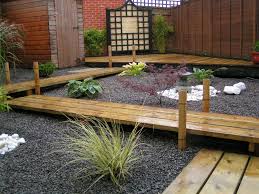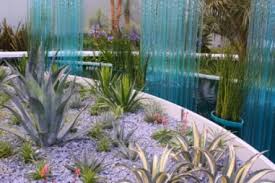Designing a garden seems to be easy. However, when the garden is finished,
some gardeners become disappointed with the result. The final product is messy
and not appealing to the eye.
That is why it is important to study the basic elements of garden landscaping
design and apply them during the making of the garden. By familiarizing the five
elements of landscape design, a gardener can put up a garden that is both
visually appealing and organized.
The first element of garden landscaping design is form. Form is defined as
the shape of something. A tree for example, may have a form involving upright
branches like pines. Or it may have a droopy form like that of a mulberry tree.
The position of plants with careful consideration on their form gives the garden
a unified feel.
The second element of garden landscaping design is line. Line refers to the
fact that a person's eye movement is unconsciously guided by the garden's
borders, the arrangement and outline of plants and other structures. This is
quite useful when the gardener wants to emphasize a certain point in his garden.
The line of plants can subtly guide the eye movement to that area.
The third element of garden landscaping design is texture. Texture refers to
how the surface of the plant is distinguished and seen, relative to the plants
and other objects around it. The viewer usually perceives the texture of the
plants by judging the size and shape of its leaves.
The fourth element is proportion. It is the requirement that the size of the
plants and structures in the garden should fit into the whole landscape
harmoniously. An out of proportion garden disrupts the landscape since the
height and size of the plants and objects do not offer a good transition. Good
transition refers to the gradual change in size or height of the object.
The final element of garden landscaping design is color theory. Color theory
is the relationship of one color to the other. Expert gardeners use color theory
to provide unity or contrast in their gardens.
Color theory can also set the atmosphere of the garden. For example, using
flowers with warm colors such as red and yellow excites the viewer and gives off
a feeling of liveliness. On the other hand, using flowers with cool colors such
as blue or green, invokes a feeling of relaxation and serenity.
Armed with this understanding, the gardener can now incorporate these
elements to make a unified and beautiful garden of his dreams.
Article Source:
http://EzineArticles.com/526487


No comments:
Post a Comment